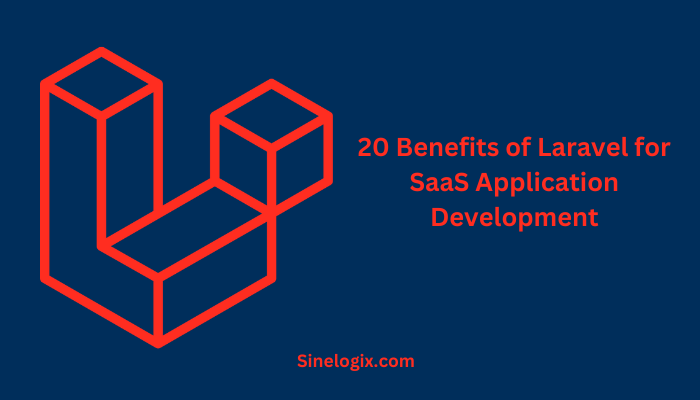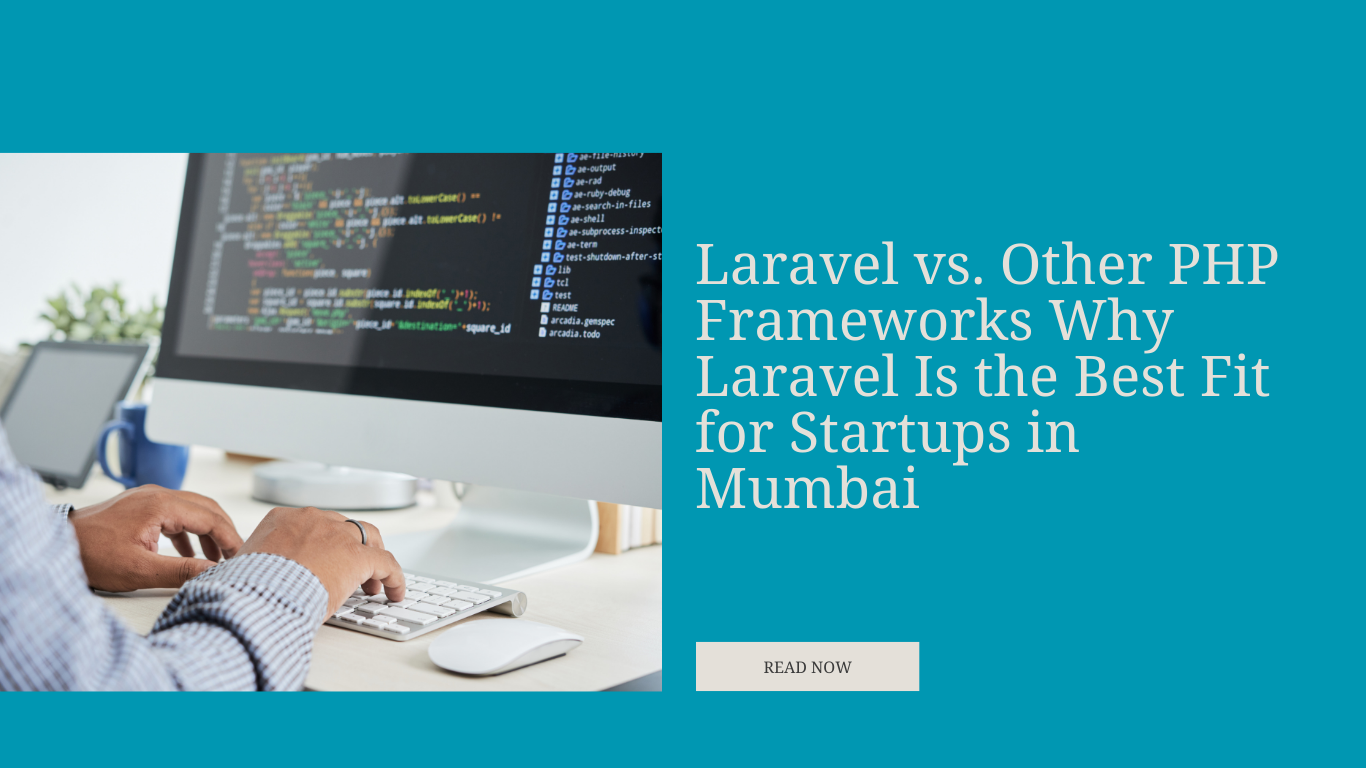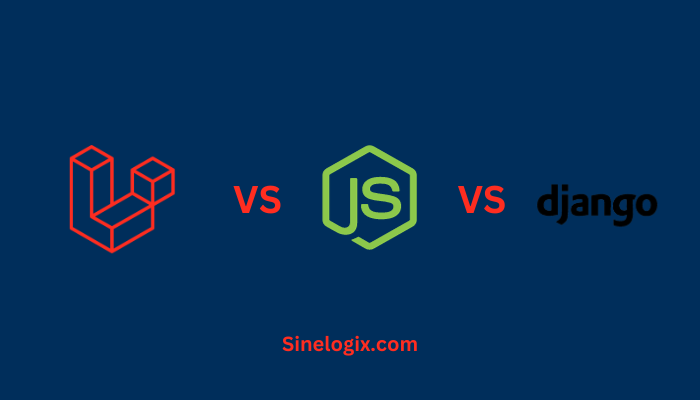Now, Let’s dive into the 20 key benefits of using Laravel:
1. Elegant Syntax and Readability
One of Laravel’s standout features is its elegant and expressive syntax. It is designed to be developer-friendly, making it easy to read and write code.
This not only enhances the overall development experience but also reduces the chances of errors and promotes better collaboration among developers.
2. MVC Architecture
Laravel adheres to the Model-View-Controller (MVC) architectural pattern, a cornerstone of modern web development. This separation of concerns ensures that your code remains organized, maintainable, and scalable.
The MVC structure allows developers to work on different parts of the application independently, streamlining development workflows.
3. Robust Authentication and Authorization
Security is paramount for SaaS applications, and Laravel excels in this regard. It provides a built-in authentication system that simplifies user management.
Whether you’re handling user registration, login, or password reset functionality, Laravel’s authentication scaffolding gets you up and running quickly.
Additionally, Laravel offers fine-grained authorization controls, allowing you to define who can access specific parts of your application. This level of control is essential for ensuring data security and compliance with privacy regulations.
4. Powerful ORM (Object-Relational Mapping)
Laravel’s Eloquent ORM is a powerful tool for simplifying database interactions. With Eloquent, you can work with databases using an intuitive, object-oriented syntax rather than writing raw SQL queries.
This not only saves you time but also reduces the chances of SQL injection vulnerabilities. Eloquent also supports relationships between database tables, making it easy to fetch related data and build complex queries.
5. Artisan Console
Laravel includes a command-line tool called Artisan, which automates various development tasks. Artisan is a real productivity booster, allowing you to generate code scaffolds, run migrations, and manage your application’s environment.
It’s especially handy for tasks like creating custom Artisan commands to automate repetitive processes unique to your SaaS project.
This tool significantly reduces manual work and ensures consistency across the development team.
6. Blade Templating Engine
Blade, Laravel’s templating engine, is designed to make front-end development a breeze. It provides a simple yet powerful way to create dynamic and reusable views.
Blade supports template inheritance, layouts, includes, and conditionals, allowing you to build elegant and maintainable user interfaces.
The ability to create modular templates simplifies the management of complex SaaS application frontends, enhancing the developer experience.
7. Robust Testing Support
Laravel is a framework that emphasizes the importance of testing. It comes with built-in support for PHPUnit, one of the most widely used PHP testing frameworks.
This encourages developers to write tests for their code, ensuring that the application remains stable and reliable as it evolves.
Laravel’s testing suite provides tools for unit testing, integration testing, and even browser testing using the Laravel Dusk package.
By adopting a testing-driven development approach, you can confidently make changes to your SaaS application without the fear of introducing regressions.
8. Active Community and Ecosystem
One of Laravel’s strongest assets is its vibrant and active community. The framework has garnered a dedicated following of developers, resulting in continuous improvement and an extensive ecosystem of packages and resources.
The Laravel community actively contributes to the framework’s development, which means you can expect regular updates, bug fixes, and security patches.
Additionally, the Laravel ecosystem includes a wealth of third-party packages that extend the framework’s capabilities.
Whether you need to integrate payment gateways, add authentication methods, or implement complex features, there’s a good chance that a Laravel package already exists to streamline your development process.
The community-driven nature of Laravel ensures that you have access to a vast knowledge base and support network when building your SaaS application.
9. Laravel Mix for Asset Compilation
Efficient asset management is crucial for optimizing your SaaS application’s performance. Laravel simplifies this task with Laravel Mix, a tool that provides a fluent API for defining Webpack build steps.
With Laravel Mix, you can easily compile and bundle assets such as CSS, JavaScript, and images. It supports common tasks like minification and versioning, ensuring that your application loads quickly and runs smoothly.
Laravel Mix also integrates seamlessly with popular front-end tools like Babel and Vue.js, making it an excellent choice for modern web development workflows.
By taking advantage of Laravel Mix, you can focus on crafting an exceptional user experience without getting bogged down by complex build configurations.
10. Seamless Integration with Front-End Frameworks
In the world of SaaS applications, creating dynamic and interactive user interfaces is often a requirement. Laravel excels in this area by offering seamless integration with popular front-end frameworks like Vue.js and React.
You can build single-page applications (SPAs) or progressive web apps (PWAs) with ease, leveraging the power of these front-end libraries while benefiting from Laravel’s robust back-end capabilities.
This combination allows you to create feature-rich, responsive, and user-friendly SaaS applications that meet the expectations of today’s tech-savvy users.
11. RESTful Routing
Laravel’s routing system is another reason why it’s an ideal choice for building SaaS applications. It encourages the use of RESTful routes, which align with best practices for designing APIs.
With Laravel, you can define routes and associated controllers, making it straightforward to handle HTTP requests and responses.
Whether you’re building an API for mobile apps or external integrations, Laravel’s routing capabilities provide a clean and organized way to expose your application’s functionality to the outside world.
This approach simplifies API development and ensures that your SaaS application can easily communicate with other services and platforms.
12. Database Migrations
Managing database schema changes is a common challenge in the development of SaaS applications. Laravel’s migration system solves this problem elegantly.
Instead of making manual changes to your database schema, Laravel encourages you to use migrations. Migrations are like version control for your database, allowing you to define changes in code and apply them to the database with ease.
This approach ensures that your database schema remains consistent across different environments, from development to production.
It also makes collaborating with other developers on the same project more straightforward, as everyone can synchronize their databases using migrations.
Plus, migrations are reversible, so you can roll back changes if needed, minimizing the risk of data loss during updates.
13. Task Scheduling
SaaS applications often require tasks to be executed at specific intervals, whether it’s sending out emails, generating reports, or performing data cleanup. Laravel’s built-in task scheduler makes it simple to automate these recurring tasks.
You can define scheduled tasks using expressive syntax, specifying when and how often they should run. Laravel’s scheduler runs in the background and ensures that your tasks are executed reliably and efficiently.
This automation not only saves development time but also ensures that critical processes are executed on time without manual intervention.
14. Queue Management
As your SaaS application grows, so does the need to handle background processing and queueing tasks. Laravel’s queue system is designed to address this requirement.
It allows you to push tasks to queues and process them asynchronously, ensuring that your application remains responsive even when dealing with time-consuming operations.
Whether you’re processing user uploads, sending notifications, or handling payment transactions, Laravel’s queue management ensures that these tasks are handled efficiently and don’t impact the user experience.
Additionally, Laravel supports multiple queue drivers, including Redis, Beanstalkd, and Amazon SQS, giving you flexibility in choosing the queue system that best suits your application’s needs.
15. Exception Handling
Error handling is a critical aspect of any SaaS application. Laravel provides a robust and customizable exception-handling mechanism that allows you to gracefully handle errors and exceptions.
With Laravel’s exception handling, you can create custom error pages, log errors for debugging, and even send email notifications when exceptions occur. This level of control ensures that you can respond to issues promptly, providing a smooth user experience.
Laravel also includes a convenient “whoops” page for local development, making it easy to diagnose and fix errors during the development and testing phases.
By proactively managing exceptions, you can maintain the reliability and availability of your SaaS application.
16. Security Features
Security is a top priority for SaaS applications, as they often handle sensitive user data and financial transactions.
Laravel comes equipped with a range of security features to safeguard your application from threats. Some of the notable security features and practices supported by Laravel include:
CSRF Protection: Laravel automatically generates CSRF tokens for every authenticated user session, preventing cross-site request forgery attacks.
Input Validation: Laravel provides convenient methods for validating user input, reducing the risk of SQL injection and other security vulnerabilities.
Authentication Scaffolding: Laravel’s built-in authentication scaffolding includes features like password hashing and “remember me” functionality, ensuring secure user authentication.
Encryption: Laravel supports data encryption, allowing you to protect sensitive information such as passwords and API keys.
Authorization Policies: Fine-grained authorization policies enable you to control access to various parts of your application, ensuring that only authorized users can perform specific actions.
Middleware: Laravel’s middleware system lets you filter HTTP requests and add security-related checks before they reach your application’s routes, enhancing overall security.
Security Headers: Laravel allows you to easily configure HTTP security headers, such as Content Security Policy (CSP), to mitigate common web security threats.
By leveraging these security features and best practices, you can build a robust and secure SaaS application that instills trust in your users.
17. API Authentication
Many SaaS applications expose APIs to enable integrations with other services and platforms. Laravel simplifies API development and authentication with built-in tools and middleware.
Whether you’re building a RESTful API or implementing OAuth authentication for third-party access, Laravel provides the necessary components to secure your API endpoints.
Laravel Passport, a first-party package, makes it straightforward to implement OAuth2 authentication in your SaaS application. This is particularly useful when you need to allow external applications or services to interact with your SaaS platform securely.
By integrating Laravel Passport or other authentication methods, you can ensure that your API is both accessible and protected, meeting the needs of modern SaaS architectures.
18. Caching
Caching is a powerful technique for improving the performance and responsiveness of your SaaS application. Laravel simplifies caching with support for popular caching systems like Redis and Memcached.
You can cache the results of expensive database queries, API responses, and even entire views to reduce the load on your application’s resources.
Caching helps in delivering content quickly to users, resulting in a smoother user experience.
Laravel also provides a clean and intuitive API for working with cache, allowing you to specify cache lifetimes and clear cache items when necessary.
Whether you’re optimizing database-driven operations or speeding up API responses, Laravel’s caching capabilities are a valuable asset for enhancing the performance of your SaaS application.
19. Documentation
Comprehensive documentation is essential for any web framework, and Laravel excels in this regard. Laravel’s official documentation is thorough, well-structured, and beginner-friendly. It serves as an invaluable resource for developers at all skill levels.
The documentation covers every aspect of the framework, from installation and configuration to in-depth explanations of features and concepts.
Whether you’re looking for guidance on setting up a development environment, exploring a specific component, or troubleshooting an issue, Laravel’s documentation has you covered.
Additionally, Laravel’s ecosystem benefits from a wealth of community-contributed tutorials, articles, and video courses.
This extensive knowledge base ensures that you have access to a wide range of learning materials and support options as you embark on your SaaS development journey.
20. Scalability
As your SaaS application gains users and data, scalability becomes a critical consideration. Laravel is designed with scalability in mind, providing the tools and practices necessary to handle increased loads and growing user bases.
Here are some key aspects of Laravel’s scalability:
Modular Structure: Laravel’s modular and organized structure makes it easier to scale your application. You can split your code into reusable modules, allowing different teams to work on specific components independently.
Horizontal Scaling: Laravel applications can be horizontally scaled by deploying multiple instances of the application behind a load balancer. This approach ensures high availability and distributes incoming requests evenly, preventing bottlenecks.
Database Sharding: Laravel supports database sharding, a technique that involves distributing data across multiple databases or database servers. This is particularly useful for applications with large datasets, as it distributes the database load effectively.
Queue Workers: Laravel’s queue system, combined with scalable queue workers, allows you to offload time-consuming tasks to dedicated worker instances. This ensures that your application remains responsive, even when handling a large number of queued jobs.
Content Delivery Networks (CDNs): Laravel easily integrates with CDNs, enabling you to serve static assets, images, and other content from distributed edge servers. This reduces server load and improves content delivery speed for users worldwide.
Caching Strategies: Leveraging caching strategies, such as full-page caching or partial caching of dynamic content, can significantly reduce the load on your application’s resources and improve response times.
Database Optimization: As your application scales, optimizing database queries and indexes becomes crucial. Laravel’s support for Eloquent and database migrations simplifies the process of database optimization.
By implementing these scalability strategies and best practices, you can ensure that your SaaS application can handle increased traffic, user registrations, and data volumes without compromising performance or reliability.
Also Read:
- Laravel For SaaS
- Laravel Disadvantages
- What is Laravel?
- Why Laravel is Better than Other Frameworks?
Conclusion
Laravel offers an impressive array of benefits that make it a top choice for developing SaaS applications.
From its elegant syntax and MVC architecture to its robust security features and scalability options, Laravel empowers developers to create high-quality, feature-rich SaaS solutions.
Its active community and extensive ecosystem ensure that you have access to a wealth of resources and support as you build and grow your SaaS project.
Whether you’re starting a new SaaS venture or considering migrating an existing application, Laravel’s advantages are sure to play a pivotal role in your success.
The framework’s focus on developer productivity, code quality, and security aligns perfectly with the demands of modern SaaS development.
As you embark on your journey to build the next-generation SaaS application, consider Laravel as your trusted partner in achieving your goals.
Its 20 key benefits, ranging from efficient development tools to powerful security features, position Laravel as a framework that can empower your team to create exceptional and competitive SaaS solutions.
Choose Laravel, and elevate your SaaS development to new heights of excellence.




